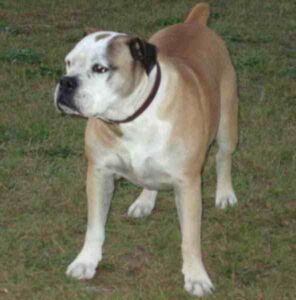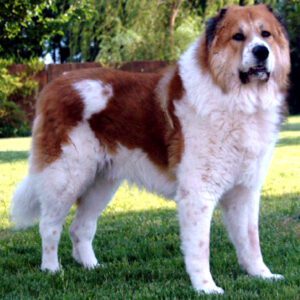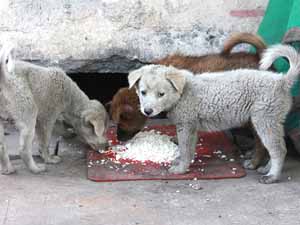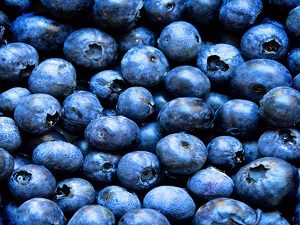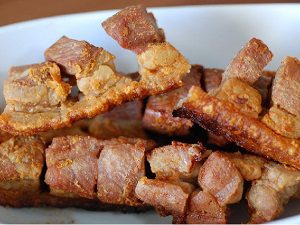The Bloodhound dog is a large breed of scent hound which was originally bred for hunting deer, wild boar and for tracking people since the Middle Ages. It is also known by some other names such as Chien de Saint-Hubert,Saint Hubert Hound, Sleuth-hound and Limer/Limier.
The Bloodhound dog breed is believed to be descended from hounds once kept at the Abbey of Saint-Hubert, Belgium, It is known to French speakers as le chien de Saint-Hubert. A more literal name in French for the bloodhound is le chien de sang.[1]
The Bloodhound dog breed is famed for it’s ability to discern human scent over great distance, even days later. It’s extraordinarily keen sense of smell is combined with a strong and tenacious tracking instinct, producing the ideal scent hound. And the breed is used by police and law enforcement all of the world to track escaped prisoners, missing people and lost pets.
Today, the Bloodhound is a highly active and intelligent dog breed whose keen sense of smell has found them a special place in law enforcement and search and rescue. Their fans love them for their sweet nature and unique appearance.
Exact origins of the Bloodhound are unknown. And there is little known about the Bloodhound’s origins. But some authorities say the breed was known around the ancient Mediterranean.
The Bloodhounds as we know them today were perfected in Western Europe about a thousand years ago. Credit of the careful development of the breed goes to high-ranking members of the pre-Reformation church.
In medieval times, when even bishops rode to hounds, many prominent princes of the church maintained packs of hounds on the grounds of the well-funded monasteries of England and France.
So careful were the monks charged with executing the bishop’s breeding program that their hounds came to be known as “blooded hounds” —“blooded” meaning “of aristocratic blood.”
Bloodhound Dog Characteristics
The Bloodhound dogs are very beautiful and large dogs. They are very powerful and stand over more ground than is usual with hounds of other breeds. Their skin is thin to the touch and extremely loose, this being especially noticeable about the head and neck, where it hangs in deep folds.
The Bloodhounds possess and unusually large skeletal structure with most of their weight concentrated in their bones, which are very thick for their length.
The coat typical for a scenthound is hard and composed of fur alone, with no admixture of hair. Acceptable colors of these dogs are black, liver, tan and red.
The Bloodhound dog is a large sized dog breed. Average height of the mature dog is between 23 and 26 inches at the withers for females, and between 25 and 28 inches for the males. Average live body weight of the mature dog is between 54 and 65 kg for males, and between 49 and 57 kg for the females.
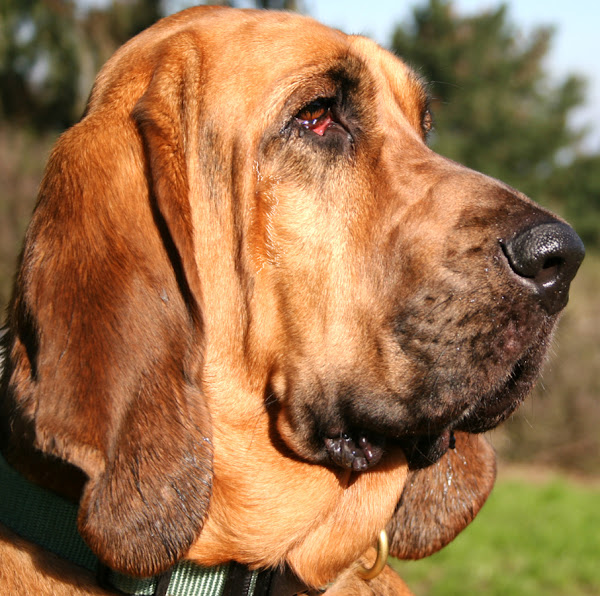
Temperament
The Bloodhound dog breed is gentle, and is tireless when following a scent. Because of it’s strong tracking instinct, it can be willful and somewhat difficult to obedience train and handle on a leash. The Bloodhounds have an affectionate and even-tempered nature with humans, making them excellent family pets.
Although, temperament of these dogs is affected by a number of factors, including heredity, training, and socialization. Puppies with good temperaments are curious and playful, willing to approach people and be held by them.
Like every dog, the Bloodhounds need early socialization-exposure to many different people, sights, sounds and experiences, especially when they are young. Socialization helps to ensure that your Bloodhound puppy grows up to be a well-rounded dog.
Lifespan
Average lifespan of the Bloodhound dogs is between 7 and 12 years.
Feeding
How much a mature dog eats depends on it’s size, age, build, metabolism and activity level. Dogs are individuals, just like people, and they don’t all need the same amount of food.
The Bloodhound dogs are large in size and very active. So, their diet should be formulated for a large-sized breed with high exercise needs. You can also consult with a vet in your area for better recommendations.
Caring
Taking good care of the animals is very important for raising Bloodhound dogs. They should be indoor/outdoor dogs who have frequent interaction with their people. They are best suited to homes with large fenced yards.
They need long daily walks and are capable of going for miles. If you live in the country or enjoy hiking, this is the breed for you. They can make great jogging buddies. You may also wish to train your Bloodhound to search and rescue work or tacking tests.
Health
The Bloodhound dogs are generally healthy. But like all other dog breeds, they are also prone to certain health conditions.
Their common health problems include hip dysplasia, elbow dysplasia, hypothyroidism, ectropion, entropion, epilepsy von Willebrand’s disease etc. Always keep good contact with a vet in your area.
| Breed Name | Bloodhound |
| Other Names | Also known as Chien de Saint-Hubert,Saint Hubert Hound, Sleuth-hound and Limer/Limier |
| Breed Size | Large |
| Height | Between 23 and 26 inches at the withers for females, and between 25 and 28 inches for the males |
| Weight | Between 54 and 65 kg for males, and between 49 and 57 kg for the females |
| Good as pets | Yes |
| Climate Tolerance | All climates |
| Color | Black and tan, liver and tan, red |
| Lifespan | Between 7 and 12 years |
| Good for children | Yes |
| Rarity | Common |
| Country of Origin | Belgium, France, United Kingdom |

